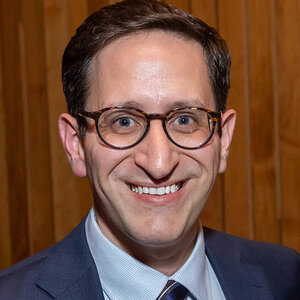This can be our turning point in managing risk

The existential question facing nonprofit executives in the wake of the recent bank failures is not if we need to diversify our organizations’ revenue streams, donor bases, and boards to manage risk, but how quickly we can do it.
The good news is that this wake-up call is also an opportunity to rethink how we structure our portfolios, train our teams, and set clear guidelines for building a healthier funding base.
A bit of context on why we cannot allow history to repeat itself: The financial meltdown of 2007-08 happened early in my career. Half my colleagues at United Way were laid off without notice, and many of our clients and constituents who relied on our programs and services went without support.
It was true then, as it is now, that over-reliance on one single sector can lead to mission failure.
So how do we chart a path forward from here? Nonprofit executives need to have open conversations about and educate themselves on a variety of issues and topics, including reliance on industries; diversified fundraising that reduces dependence on any one gift type, industry, or donor; stringent governance at the board level; and organization-wide understanding of the markets.
Let’s take these one at a time:
A matter of trust: First and foremost, we have to remind ourselves that in soliciting donations and ongoing support from any one institution, we become intrinsically tied to its mission, standards of governance, integrity and reliability. Persuading a senior managing director or CFO to make a large gift or join your board looks great in an annual report and probably in the bank account, but what risk are we exposing ourselves to as an organization?
Of course, many individuals in banking and finance are sincerely committed to a nonprofit’s mission, championing an alliance because of a personal interest or that of a corporate social responsibility. What we must demand of ourselves going forward is to consider the stability of the institution they represent and the systems they have in place to protect their investors and depositors’ assets.
Tough love in your portfolio mix: Make a determination on how much to diversify your funding sources and stick to it. A good rule of thumb is to avoid relying on any one industry for more than 15 percent of your organization’s total revenue. You may want to engage a third-party consultant to conduct an analysis that holds up to future scrutiny. Or, if you have been thoughtful about assembling a tough-minded and independent-thinking board, it can tackle this analysis and recommendation. Work to achieve at least six months of operating expenses in your reserves as a rainy day fund.
Diversity comes in many forms: Just as a responsible investment portfolio needs to be diversified, so too must our boards offer perspectives from various industries, sectors, and income sources, as well as life experiences. This will not only secure financials but also provide a wider array of thought leadership and expertise that can make a big difference in an unforeseen crisis and challenge uniformity in thinking. Allow your board to challenge you as well as each other. Heterogeneity will bring your organization strength.
Educate your staff: Capacity building will be crucial in preparing your staff to apply a critical eye and intellect to funding and even volunteer sources. Many nonprofit employees do not understand financial services and the markets that affect them—but there’s a good reason for this.
Nonprofit leadership—and fundraisers in particular—are becoming more and more reflective of the populations many of us serve. These executives are coming from less affluent backgrounds, and their staff come from communities in need, where they may have received services or supports from nonprofits. They may not be as well versed in the intricacies of the financial and economic dynamics that, frankly, has many of us scratching our heads, but which we all must learn very quickly.
As nonprofit leaders, it is imperative that we invest in our staff so they can acquire awareness about funding integrity and practices. How are decisions made for investments and business decisions in other industries? What is the difference between an associate and a director or a managing director? What types of markets do they invest in? Who are they doing business with?
One reason why this is important is that nonprofit staffers need to understand the nuances separating a corporate social responsibility function, a company’s operating budget, and a corporate foundation. The accounts and funding sources are different, and this can impact funding stability and adherence to commitment.
In sum, while the crises at Silicon Valley Bank, Signature Bank, and Credit Suisse affect nonprofits everywhere, if we strengthen our infrastructure and guidelines resolutely, we should be able to look back on this moment as a turning point in our resilience as a sector.
Adam M. Doyno, MPA, CFRE, is executive director of CUNY SPH Foundation, CUNY Graduate School of Public Health & Health Policy.





